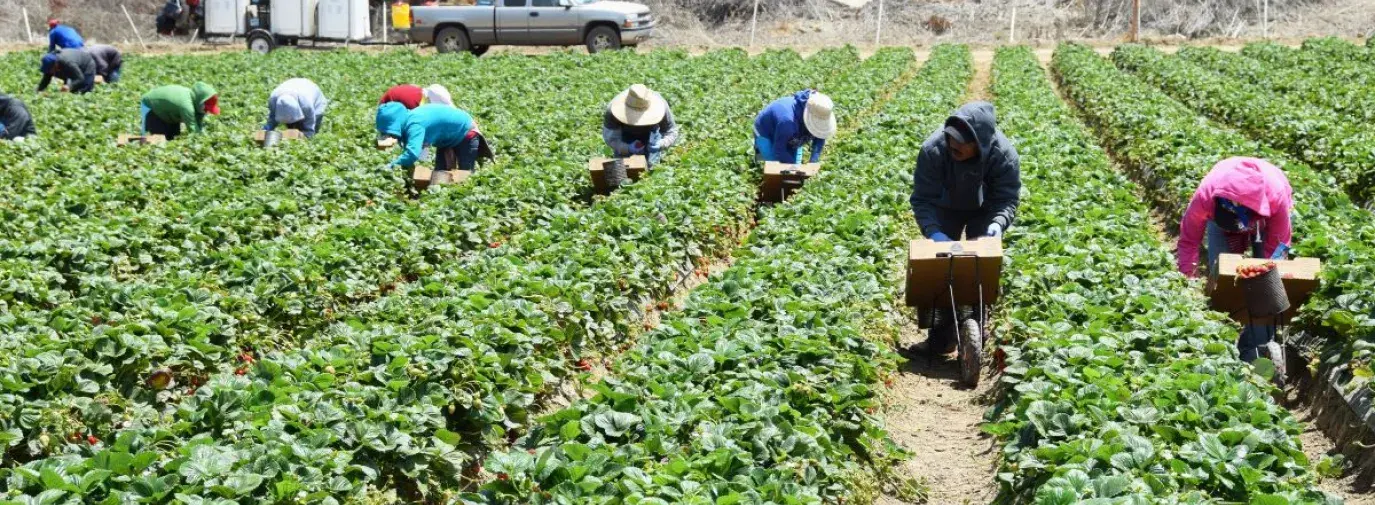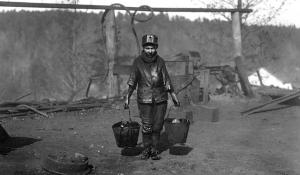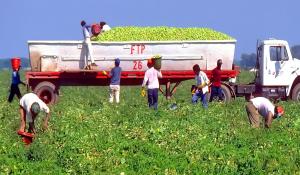
In Latin American countries and lower-latitude communities around the world, researchers are finding a rise of chronic kidney disease in outdoor workers—a consequence of persistent dehydration.
“There are researchers who are saying this is the first epidemic of climate change,” says Dr. Kristina Dahl, a principal climate scientist for the Union of Concerned Scientists. In the US, Dahl says, this reality may not be far off for our own outdoor workforce.
In 2006, California became the first state to pass heat protection standards. In the 17 years since, only three other states have adopted outdoor workplace heat standards: Oregon, Washington, and Colorado (in Colorado, for agricultural workers only).
From farmers to construction workers, landscapers, garbage collectors, airport tarmac workers, emergency responders, and so many more, our country depends on the outdoor workforce, so why don’t we protect them when it comes to heat?
Dahl is focused on outdoor workers, climate, and bridging science with policy. In the next 30 years, she says, the frequency and severity of extreme heat will rise across the country, bringing with it an increase of heat illness and heat-related deaths for workers and worsening historic inequalities for this under-valued workforce. While average temperatures rise nearly every summer, we can start protecting our workers today by passing worker-safety laws and enforcing heat-protection standards and practices.
The State of Heat Standards
Adopting heat protection—for outdoor or indoor workers—involves a knotted web of factors, from policy to implementation. Currently, there are no federal heat protection standards in the US. While the Occupational Safety and Health Administration (OSHA) has a rule that states employers have a duty to ensure a healthy and safe work environment, heat is not specifically mentioned. This means that basic standards for outdoor workers’ health may not be met, such as ample and accessible shade, cold and clean water, and cooling breaks, according to Dahl.
Even in states with protective regulations, when it comes to enforcement, Dahl has heard farm workers say: “There’s one law on the books and there’s another law in the field.”
In California, for example, science-informed heat protection standards do exist; however, implementation varies from employer to employer, field to field. Employees may not be informed of the laws protecting them or the signs and symptoms of heat illness, or employers may not offer that information in the appropriate languages. Some workers may have more incentive to stay quiet than advocate for their rights, like those who are paid by the pound of produce picked, for whom an increase of water and shade breaks would cut into earnings. Undocumented immigrants may fear deportation for speaking up, others may not have the resources to support their advocacy and feel the effort is in vain.
“It’s not a group of people that has been empowered in the past—quite the opposite,” Dahl says. Therefore, even with decent laws, employers must be the ones to hold themselves accountable to provide shade, water, and rest for their workers.
When people with little power, desperate to keep their jobs can’t speak up, it’s called a “lower-archy,” according to Marcy Goldstein-Gelb, co-executive director for the National Council for Occupational Safety and Health (National COSH).
“Heat is exactly the same scenario as all other poor conditions that workers face,” Goldstein-Gelb says. “Having the least voice is often equivalent to a death or harm sentence.” And so the system snowballs: when workers can’t speak up, harm and abuse go unreported, and policy is at a standstill.
How We Can Support Outdoor Workers
Build Power from Worker Voices
As with any demand for change and justice, it’s critical to engage with the affected communities. Organizations like National COSH develop campaigns based on a network of community-based worker organizations that speak directly with outdoor and indoor workers operating in extreme heat environments, asking about symptoms but also what would make their lives safer, then encouraging employers to take the steps to protect their workers.
“Without the workers being the eyes and ears on the ground, then it’s all going to be meaningless,” Goldstein-Gelb says. “You can have all the laws you want, but unless there are workers using them and taking action and speaking up, they’re just pieces of paper. Our role is to support workers in building their voice, power, and collective action.”
Advocate for Federal Standards
OSHA has announced that it has begun a rule-making process to regulate protections and enforcement; however, it may be years before we see finalization and real-world implementation.
While state policies and protections are important, federal standards are critical, as they can set protections based on human tolerance and health (compared to varying state-by-state in accordance to how people have acclimated to temperature).
“This is based on health, science, and research about what our bodies can take and can’t take,” says Dahl. “All people in all states deserve to be protected by standards and the only way we’re going to get there is with federal standards in place.”
Then comes on-the-ground enforcement: checking in on employers, reviewing their plans for providing education in multiple languages, and inspecting the quality and temperature of available water and access to ample shade. Goldstein-Gelb adds unionization, collective bargaining agreements, and strong worker committees are equally critical for this vulnerable workforce.
Educate on Heat Health and Safety
It’s important that workers are well-equipped for the immediate threats they currently face. Employers, employees, and advocates can all contribute to protecting outdoor workers with these steps:
- Support local worker-safety organizations in your state or county who protect workers facing extreme heat conditions. Personal testimony and comments of support carry weight in local legislatures, where even 10-20 people’s voices can sway policy.
- If you’re an employer, speak to your workers about what you can do better to provide a safer and more comfortable work environment.
- Provide multi-lingual (including written and verbal) education on the signs of heat illness, dehydration, and heat exhaustion. The CDC lists tips to prevent heat-related illness, such as wearing appropriate clothing, pacing yourself, and drinking plenty of fluids.
- Advocate or implement buddy systems, so workers can look out for their peers while also being looked out for themselves.







